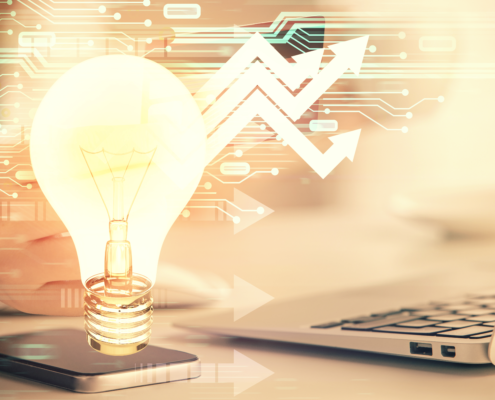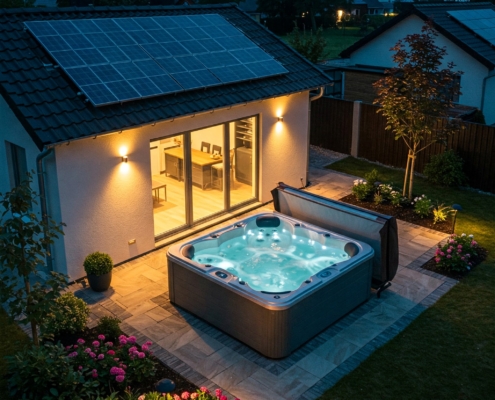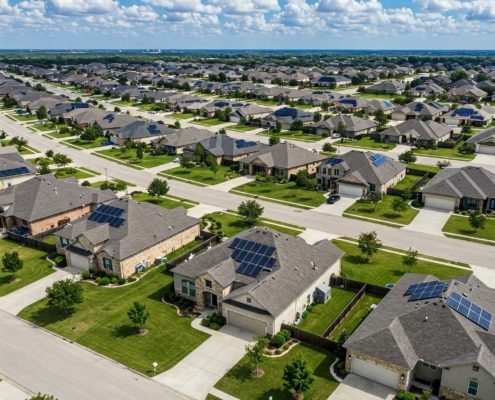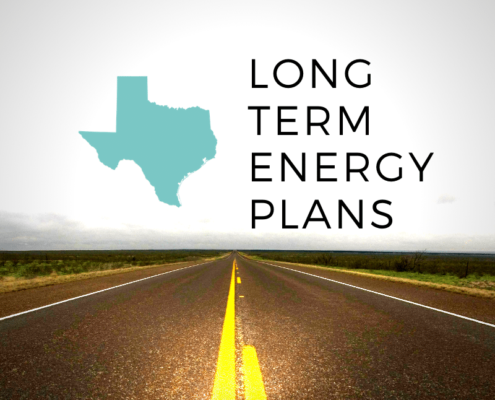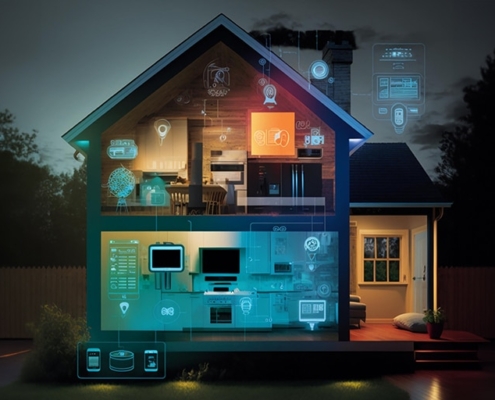Last Updated on June 24, 2022 by Mary Pressler

How Does Electricity Work?
Understanding the Electricity Supply Chain
The electricity supply is one of the most important services used by modern society, and this is precisely why major blackouts are so disruptive. Since electricity is available at any power outlet, it is easy to overlook the complex supply chain that makes the service possible. Electricity follows three general steps before reaching a building: generation, transmission and distribution.
The Different Methods of Electricity Generation
Since electricity is a form of energy, it can only be obtained from other types of energy. As a result, the generation methods are as varied as the energy forms available, and some energy inputs can be converted to electricity with more than one method.
There are many ways to classify energy sources, but generally they are generally described as renewable or nonrenewable:
- A renewable energy source is one that can be used without affecting its future availability. Solar power is a great example: every single building in the world could be covered with photovoltaic panels, and the amount of sunshine reaching the planet tomorrow would not be affected in any way.
- A nonrenewable energy source is one that is affected by today’s consumption. For example, the fossil fuel reserves of the world are finite, and excessive usage limits their future availability.
We tend to use the word “renewable” to describe clean energy, but that is not always the case. For example, biomass power is considered renewable because it uses organic waste, a very abundant resource. However, biomass power produces carbon emissions through combustion, and therefore it isn’t considered clean.
Dispatchable vs Non-Dispatchable Energy Sources
The distinction between dispatchable and non-dispatchable power sources is much less known by the general public, but it is very important in the modern electric industry. In simple terms, a dispatchable source can provide power on demand, while a non-dispatchable source has a variable output that depends on uncontrollable conditions.
- Natural gas and hydroelectricity are excellent examples of dispatchable sources. They can respond to changes in electricity consumption faster that most other sources.
- Solar and wind power are non-dispatchable sources, since you cannot get electricity from them when their inputs are unavailable.
If someone asks which electricity source is the best, it’s a trick question. All generation technologies have strengths and weaknesses, and they complement each other. As a result, a power system that uses a mix of sources is much more reliable than another one depending heavily on one source. For example, a power grid that uses only natural gas is vulnerable to volatile prices, and a grid that depends on hydroelectricity is vulnerable to droughts.
What is the Difference Between Transmission and Distribution?
Regardless of the type of power plant, electricity must be delivered from generating stations to the point of use. This process uses many types of equipment and components, but the most important elements are power lines and transformers.
Although electricity has many properties, two of the most important are voltage and current – the power delivered by a generator or carried by a conductor is the product of these two values. For example, a circuit carrying 10 Amps at 240 Volts delivers the same power as a circuit carrying 20 Amps at 120 Volts.
- High voltage is preferred when carrying large amounts of power, since it reduces current.
- Power transmission at high voltage and low current is the most economic option, since high current requires large wires and causes more heat losses.
- However, high voltage is too dangerous for household use and for distribution lines that are close to buildings.
This is why electricity is carried from power plants at high voltage, but is then stepped down to medium voltage for distribution to individual buildings, and then to low voltage for use by appliances and equipment. All these voltage conversions are achieved by transformers.
How Transformers Work
- Step-up transformers are used to convert the output of power plants to high voltage, sending electricity with transmission lines.
- Transmission lines reach electric substations, where another set of transformers steps down the voltage to be used in distribution lines.
- Finally, smaller transformers in power poles step down the distribution voltage to a suitable level for electrical devices – typically 120V and 240V. Note that these values may change slightly, and you may find installations that use 120/208 V or 127/220V.
Of course, a power grid has many more components beyond transformers and power lines. Transmission lines are normally carried by metallic pylons, while distribution lines are carried by utility poles, normally made of concrete or wood. In addition, all the transformer sets used in the process are equipped with electrical protection devices.
The connection that reaches your power meter is the final stage after voltage has been stepped down to the lowest level. Medium-sized buildings normally connect to the distribution voltage and have their own transformers, while large commercial and industrial complexes connect to the transmission voltage with their own substation.
How the Texas Electricity Sector Operates
Traditionally, power plants and electricity grids have been owned by a vertically-integrated utility company. However, since this creates a monopoly, utility companies are subject to stringent regulations.
Texas is characterized by having a deregulated power sector, where conventional utilities have been split into separate businesses. There are three main types of companies in the Texas power sector:
- Power generators
- Transmission and distribution utilities (TDUs), which operate the network
- Electricity companies/retailers
Basically, you purchase electricity from retailers. In turn, they trade electricity from generating companies in an open market, and TDUs add a fee to cover network costs. The transmission and distribution cost is similar to the “shipping and handling fee” you pay in online purchases.
Thanks to how the Texas power sector is structured, over 85% of the population can choose between electricity providers. There are normally two ways to reduce electricity bills, which are energy efficiency measures and on-site generation. However, in Texas you have a third option: choosing the electricity plan that better suits your needs.
Making Smart Decisions when Purchasing Electricity
Power retailers in Texas offer a wide range of electricity plans, each having advantages and limitations. The best option can change depending on the needs of each building:
- Some offer a fixed electricity price for the entire duration of the plan, but you must pay a penalty to terminate the contract early.
- There are also plans that follow the opposite approach: you can switch to another provider at any time, but you are subject to a variable price that can increase sharply from one month to the next.
- Prepaid electricity plans normally offer both a fixed price and switching flexibility. In exchange for those benefits, you pay for a specified amount of kilowatt-hours in advance.
Comparing and purchasing electricity plans is very simple. At QuickElectricity.com, you can choose between many electricity retailers and plans, and the entire switching process can be carried out online.

